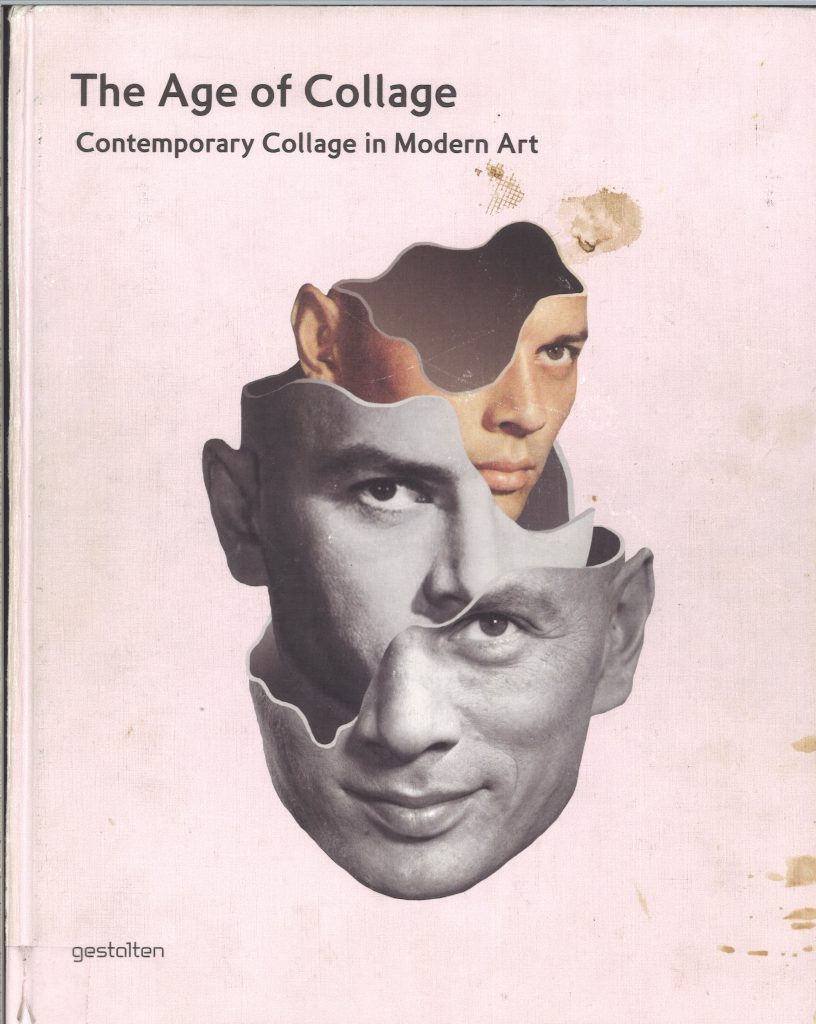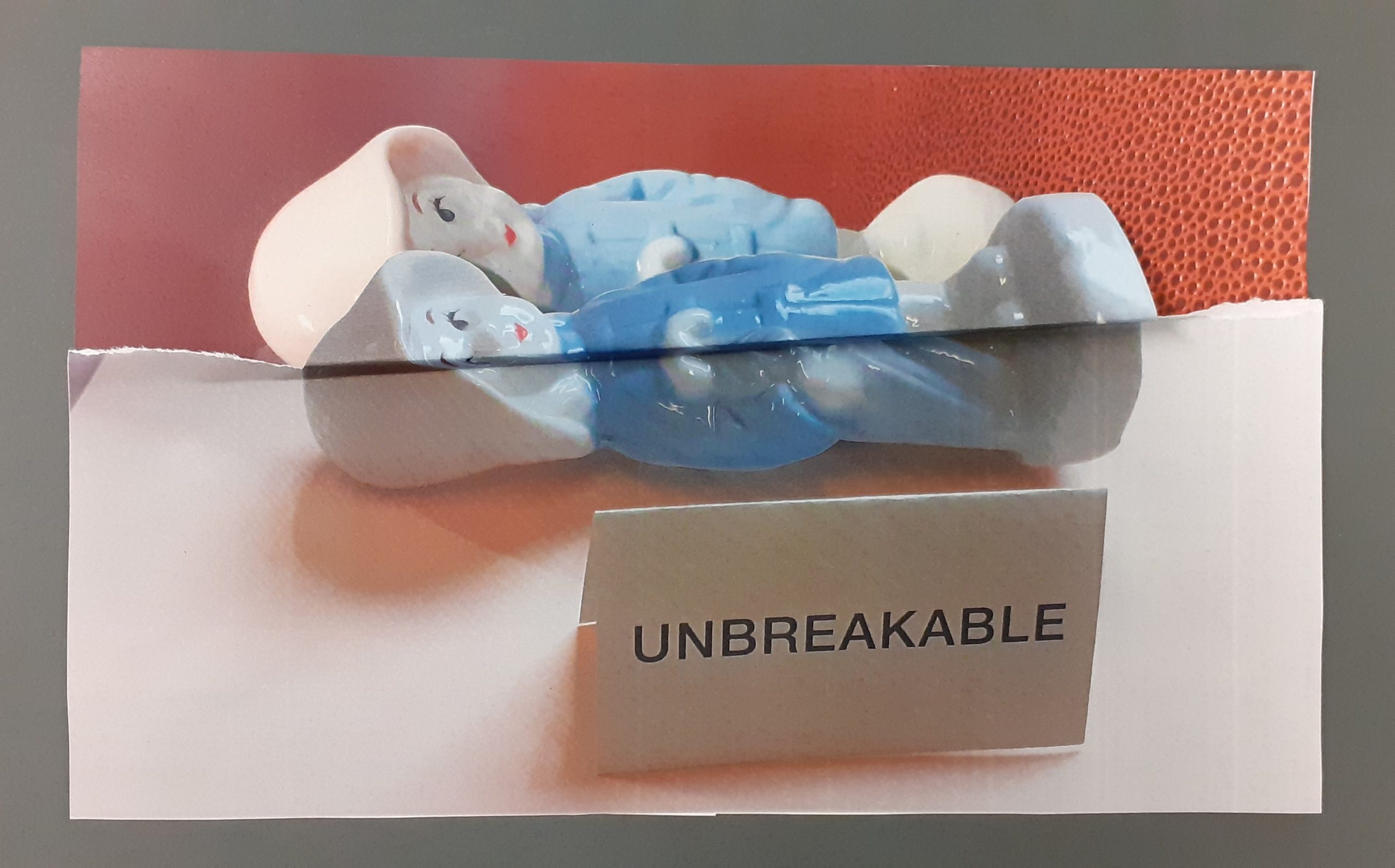As nouns the difference between assemblage and collage is that assemblage is a collection of things which have been gathered together or assembled while collage is a picture made by sticking other pictures onto a surface.
What is the difference between assemblage and collage? | WikiDiff
As a verb collage is to make into a collage.
I have always thought of collage as a 2D craft- Working on a flat piece of card or paper.
When researching collage artists, I discovered the artists’ ability to use paper in a different way. Today’s workshop encouraged me to think of paper as a 3D material. How could I get it to stand up? How could I layer the paper or break it apart?
I used last week’s photos and my labels, to inspire the way I treated the paper. For example, the photo that mentions ‘old’, guided me to tear up the paper and give it an aged look. This helps to communicate a message to the viewer.
Collage Artists
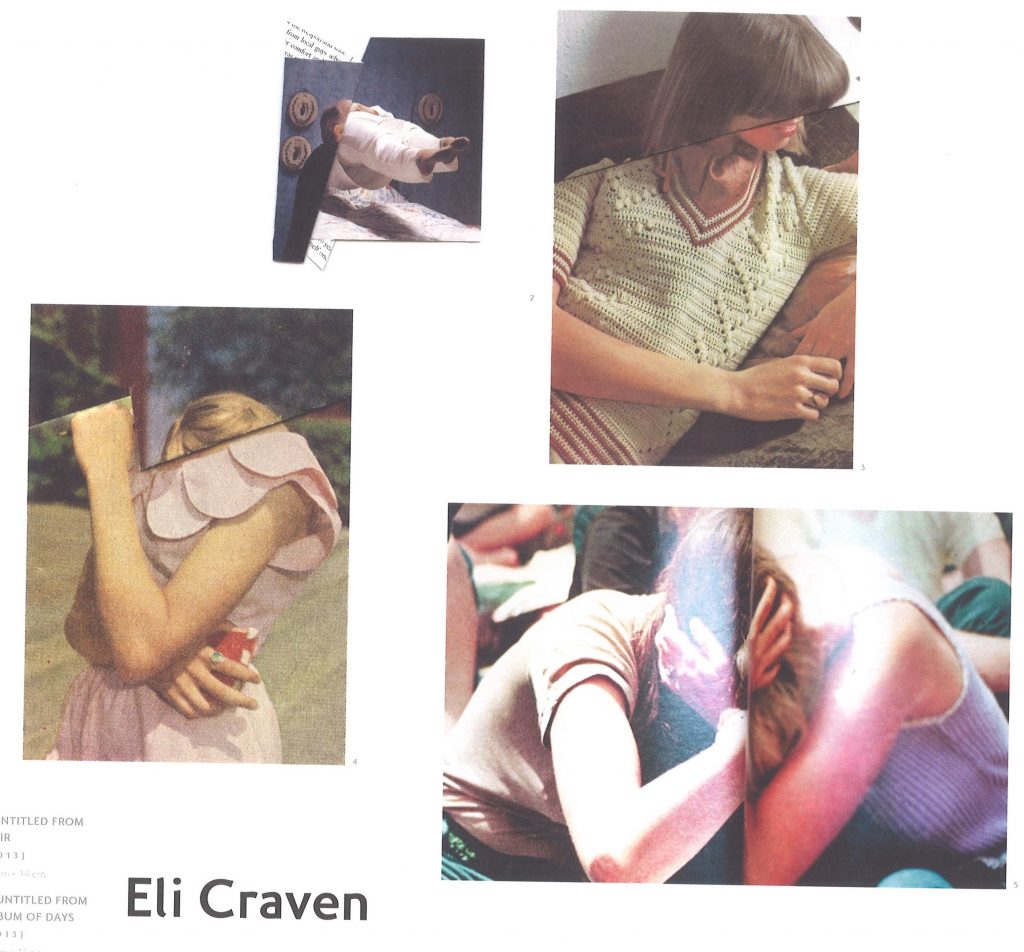
Craven uses different methods of manipulating paper. I was interested by the way he uses paper folding to alter the compositions. Using one image for the collage means that the result looks harmonious. The edges blend softly.
This folding method means that areas are hidden and are missing from the picture. This takes away visual clues and makes it slightly confusing for the viewer. For example, hiding the person’s facial expression means that we don’t know how the person is feeling. Instead, the viewer needs to make guesses, such as about the identity of the person. The image is then up to interpretation.

Inspired by the technique of paper folding, I took one photo of The Raincoat Girl figurine, and folded the paper diagonally. I left one side of the paper flat and folded the other half into a fan. This method distorted the shape of the figure. The image looked different depending on the angle I then viewed it from. The choice of photo was effective because the background is bold compared to the object. This highlighted the figure’s outline.
Phillipe Jusforgues
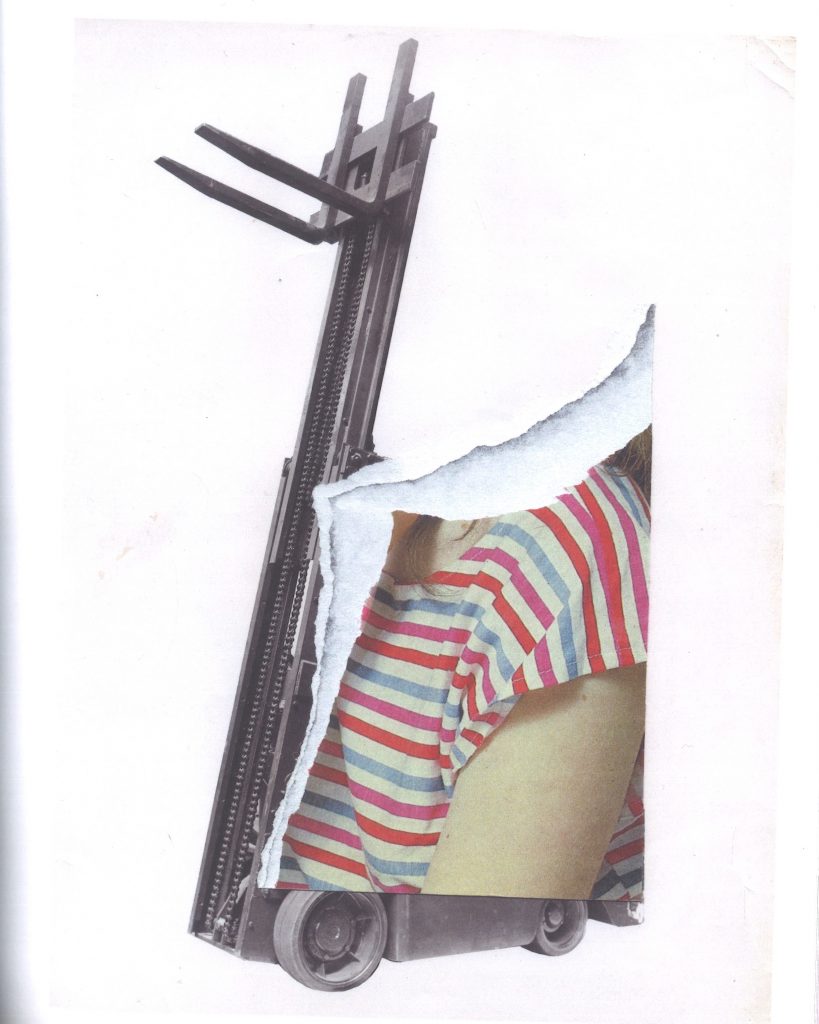
By tearing out a section of the collage, the artist brings the image forward into the 3D world. In this case, he draws more attention to the image of the girl by having the section raised off of the surface. The use of a coloured image against a black and white image, also helps to separate the two subjects of human and machine.
I was inspired by the idea of having part of the image come forwards away from the background. The concept for this collage came from the word ‘unbreakable’ and the angle of the figure laying down. I wanted to create a visual break in the image. I chose to do this by doubling up the figure and having half of her slightly mis-aligned and therefore break away from the original girl.
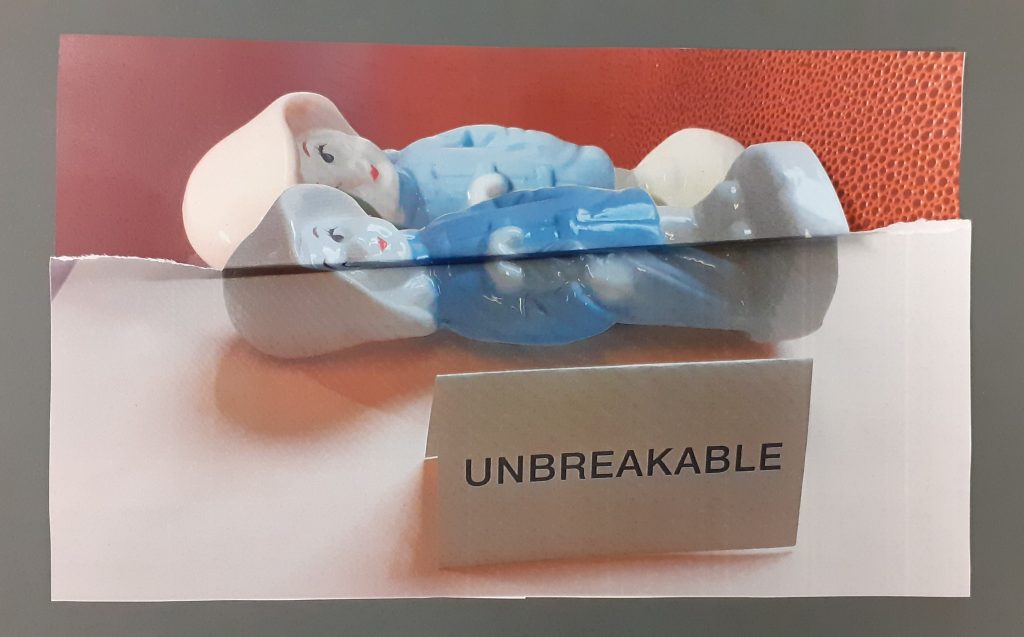
I used a scalpel and cutting mat to carefully cut around the edge of the figure in the lower image. I tore the remaining paper off, to give the ripped effect seen on the left and right of the picture. I used a photo with a dark background to help the outline of the figure show up. I stuck the 2 photos together, allowing a gap for the upper figure to lift off slightly. I then folded this part forward and then made another fold backwards, to ensure the figure was lifted slightly.
Vanessa Lamounier de Assis
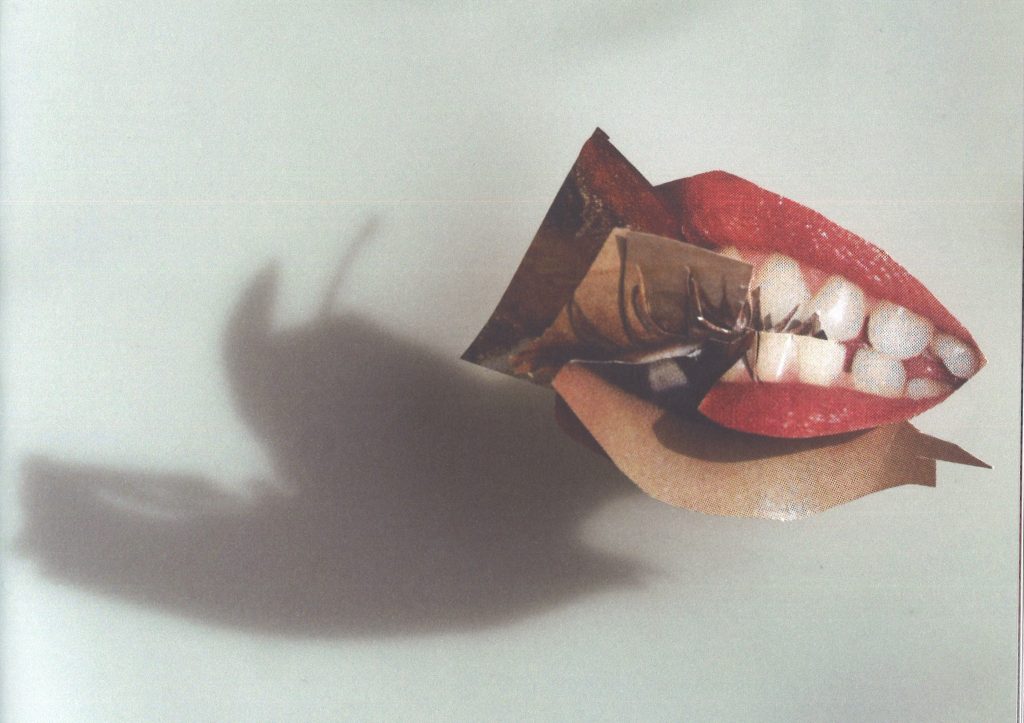
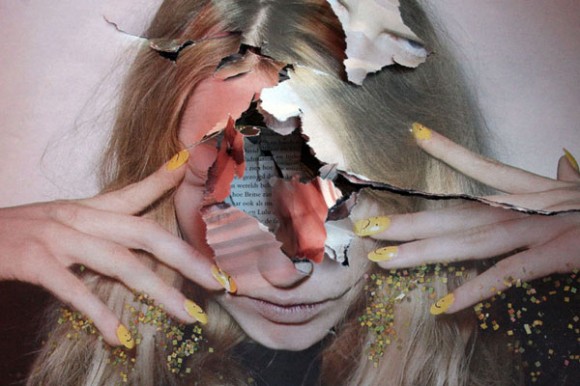
Vanessa Lamounier de Assis creates paper models of semi- abstracted body parts. Her art talks about sexuality, consumer culture and beauty standards. Her pieces stand alone and have a solid look to them, despite being made from a light-weight material. She combines separate images within a single collage to create new meanings.
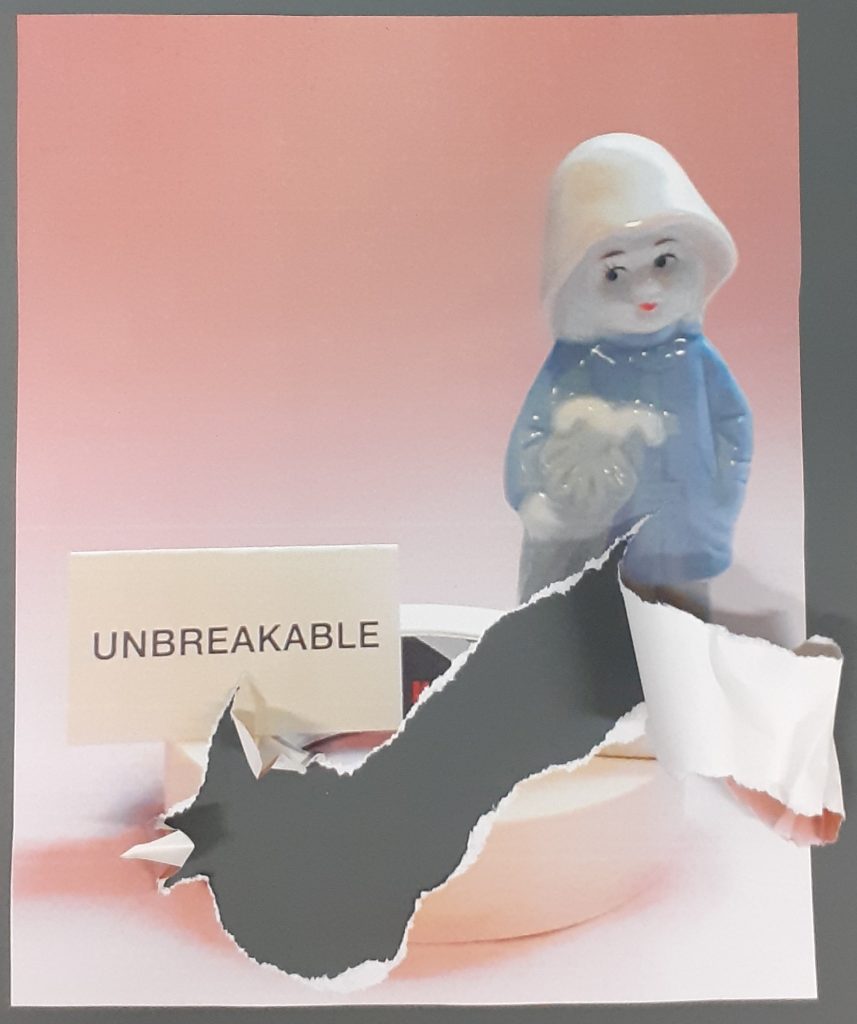
Phillipe Jusforgues and Vanessa Lamounier de Assis use tearing when manipulating paper for their collage. I took this idea further by allowing a section of paper to curl outwards. The tear creates an emotional impact because it disrupts the peaceful balance of the original photograph. The rough edge of the torn paper is in contrast to the pastel colours in the original photo, as pastel colours give a sense of calm within an image.
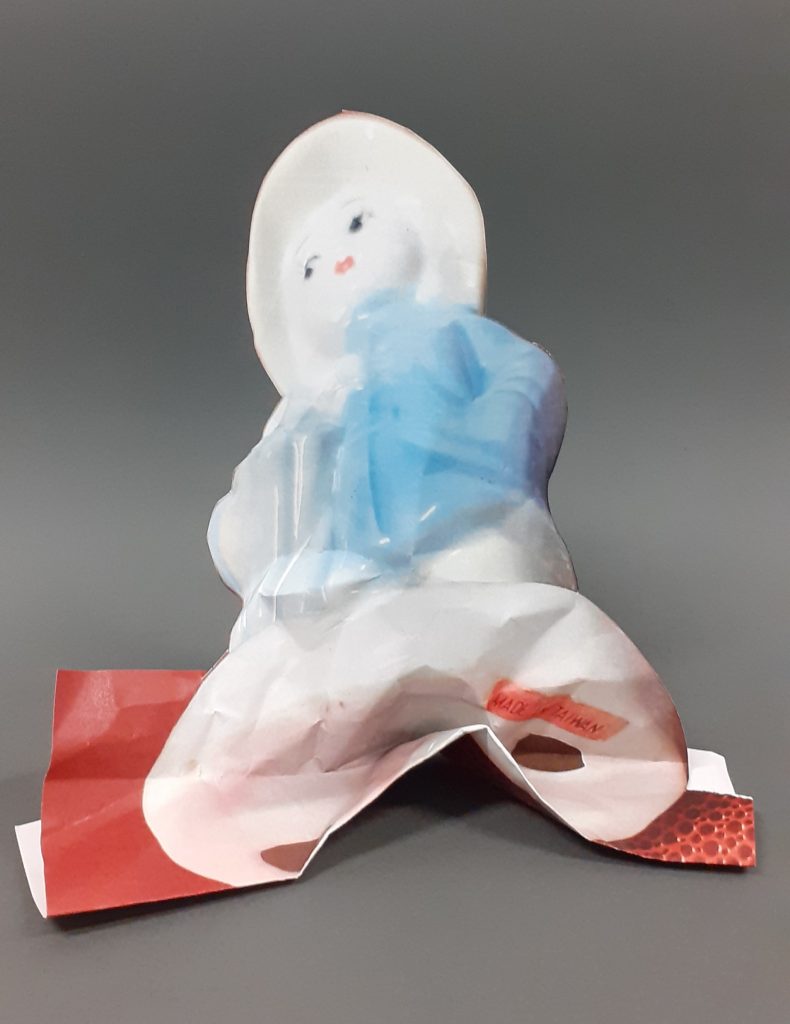
I was interested in playing with paper to create a solid-looking structure. This photo of the raincoat girl has a statuesque quality. For this reason, I wanted to emphasise this impression using paper. I cut around the figure, leaving the background attached at the bottom of the page, for added weight and therefore stability.
I folded the base of the paper figure, but it was not standing up. I then scrunched the paper to add more weight to it. This helped. I bent the bottom section upwards and pinched the upper half of the sculpture. This method brings the subject to life by creating an imitation of a statue or ornament. But made from paper, it looks more delicate.
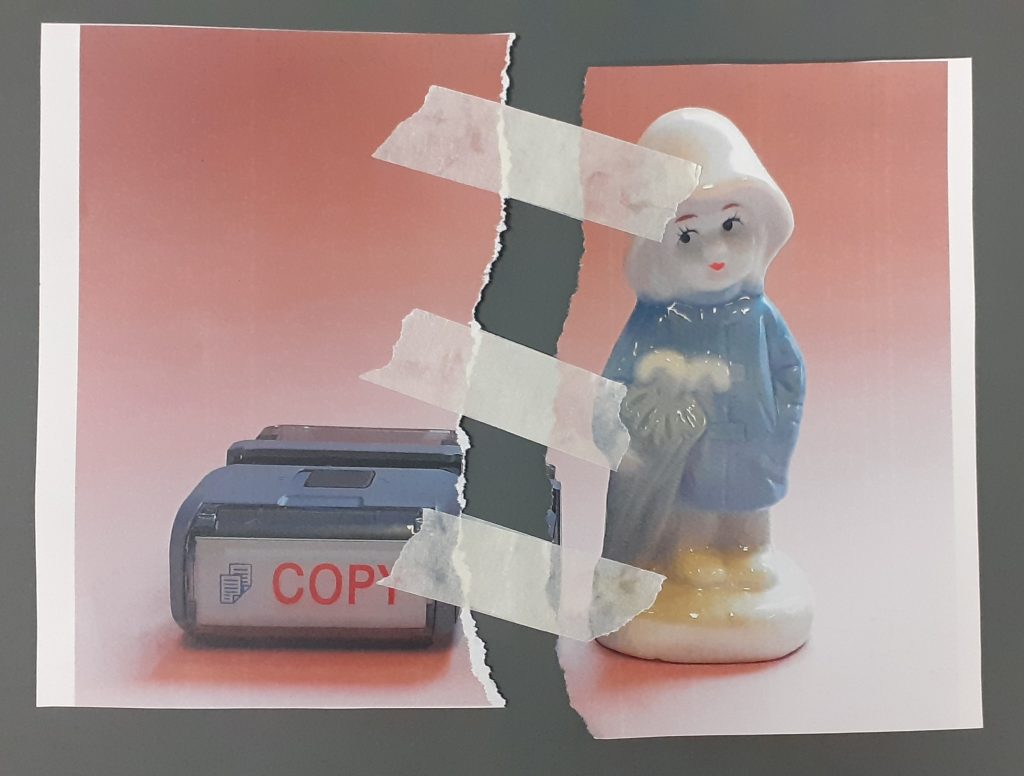
Another collage technique used by artists such as Bobby Neel Adams, is to tear or cut and image in half and piece is back with a separate image, therefore creating imaginary faces and scenarios. For this piece, I reassembled the paper using masking tape. The result is harsh looking and signifies repairing a broken object.
Andrew Lundwell

Lundwell’s use of tearing paper gives this composition an organic appearance. This is suitable for the natural themes within the photographs.
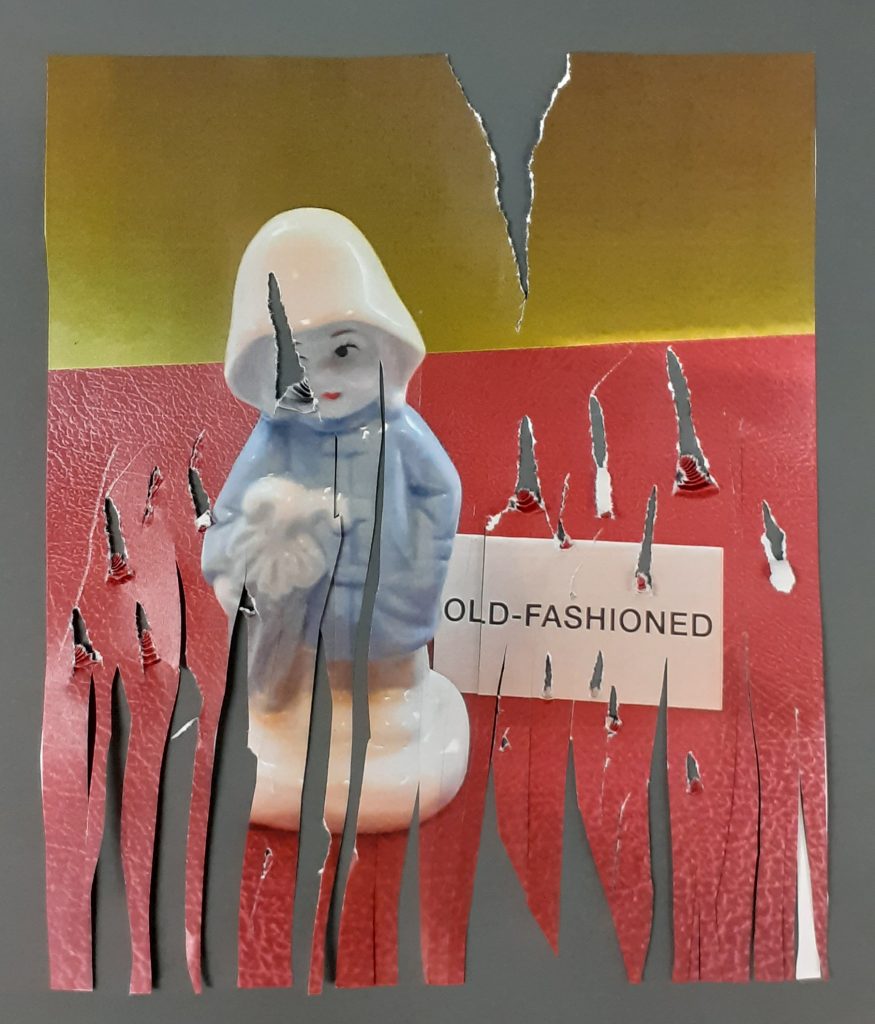
I wanted to create a worn, old look to this picture, to reference the phrase ‘old-fashioned’. I avoided making the words unreadable, because the word is a part of the meaning of the composition. I used scissors to drag and cut through the paper. Obscuring her face has the effect of making her appear damaged or affected. It has more of an emotional impact that if I had damaged only the background and avoided the figurine.
